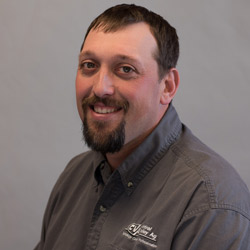Source: Central Valley Ag
As we are watching this corn crop come out of the ground this year, it’s time to begin evaluating what has happened thus far. Different areas have had wet spells and planted corn in wet soils, while almost everybody has planted in cold soils. We have had humidity that made residue management difficult, and the wind that has buried clean strips with trash. Through it all, you all did the best job you could to manage the conditions that you had and planting to the best of your abilities. So now is the time to grade your work.
As Mike Zwingman has talked about in the past, we need to be evaluating our Net Effective Stand Percentage, or N.E.S.P. That number is going to do a lot towards dictating how we manage this crop going forward. But I am not going to continue to hammer on that same point today, what I’m going to focus on is getting that information recorded.
There are many great tools out there for bringing all of this information together. But the two I am going to focus on are AgFiniti Mobile by Ag Leader and Climate Field View. First of all, I want you to make darn sure that when you are out in the field, you have a way to see your planting maps. What is planted, when it was planted, populations, and preferably singulation, spacing, etc. Especially if you are planting variable rate, without knowing the population target where you are at, it makes it darn hard to quantify results.
So in the case of AgFiniti by Ag Leader, if you have an InCommand 1200 display, you can sync all of this information directly to your iPad without going to the cloud with it, and you can let others like your Agronomist or Scout do the same. In the case with Field View, if you are using a 20/20 Display, you probably already have the info on your iPad. In either case, you can upload the data to your tablet through the cloud if you are using another monitor, but there will be some sort of yearly fee associated with it. These are just a couple of examples, there are more on the market, and each one has its pros and cons.
But once you are out in the field, I want to make sure every observation you make about your field gets recorded into that device in your hands. We need to have it to reference two weeks, and two months from now for decision. And that is my take home for the day. Observations are good, but actionable data is better. Recording this data to a digital platform that saves not only the observation but where it was made is key to being able to make management decisions with it later. Your Nitrogen plan, your herbicide plan, and your irrigation plan are all going to be affected by this NESP you are recording now. Just as importantly, as we make decisions about our tillage and planting equipment for the next year, this information will help guide us to where investments need to be made.
You won’t get a second chance to make and record many of these observations again. As we transition from planting to the next stage of this crop year, don’t lower your guard yet.



![[Technology Corner] Discussing AI’s Potential Impact on Service & Support](https://www.precisionfarmingdealer.com/ext/resources/2025/04/11/Discussing-AIs-Potential-Impact-on-Service--Support.png?height=290&t=1744385717&width=400)


